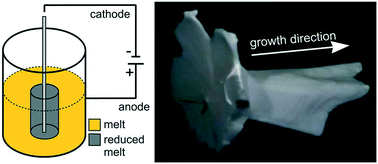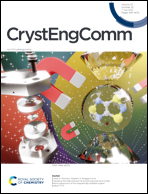Electrochemically induced nucleation of oxidic crystals in melts – a review†
Abstract
Crystal engineering is a wide field aimed at producing a large range of crystalline phases in a multitude of forms suited for many specific applications. The method of electrochemically induced nucleation (EiN) enables to produce oxidic crystalline phases with an orientation alignment in a short period of time. It is based on applying an electric potential between a cathode and an anode contacted by a melt which is locally modified to trigger the nucleation of a desired phase. It is performed at temperatures high enough to prevent nucleation outside of the modified zone but below the liquidus temperature of the melt. Hence, the locally formed nuclei grow throughout the melt, only competing with crystals nucleated in the same area. As the crystals grow directly from the melt, this method also enables the growth of phases difficult to produce using other methods as the crystallization of secondary phases or phase separation during cooling can be prevented. The high temperatures applied lead to comparably fast crystal growth which can cause a high degree of growth selection up to the production of glass-permeated single crystals showing properties comparable to true single crystals, but grown in a matter of minutes.

- This article is part of the themed collections: 2021 Highlight article collection and Crystal Growth


 Please wait while we load your content...
Please wait while we load your content...